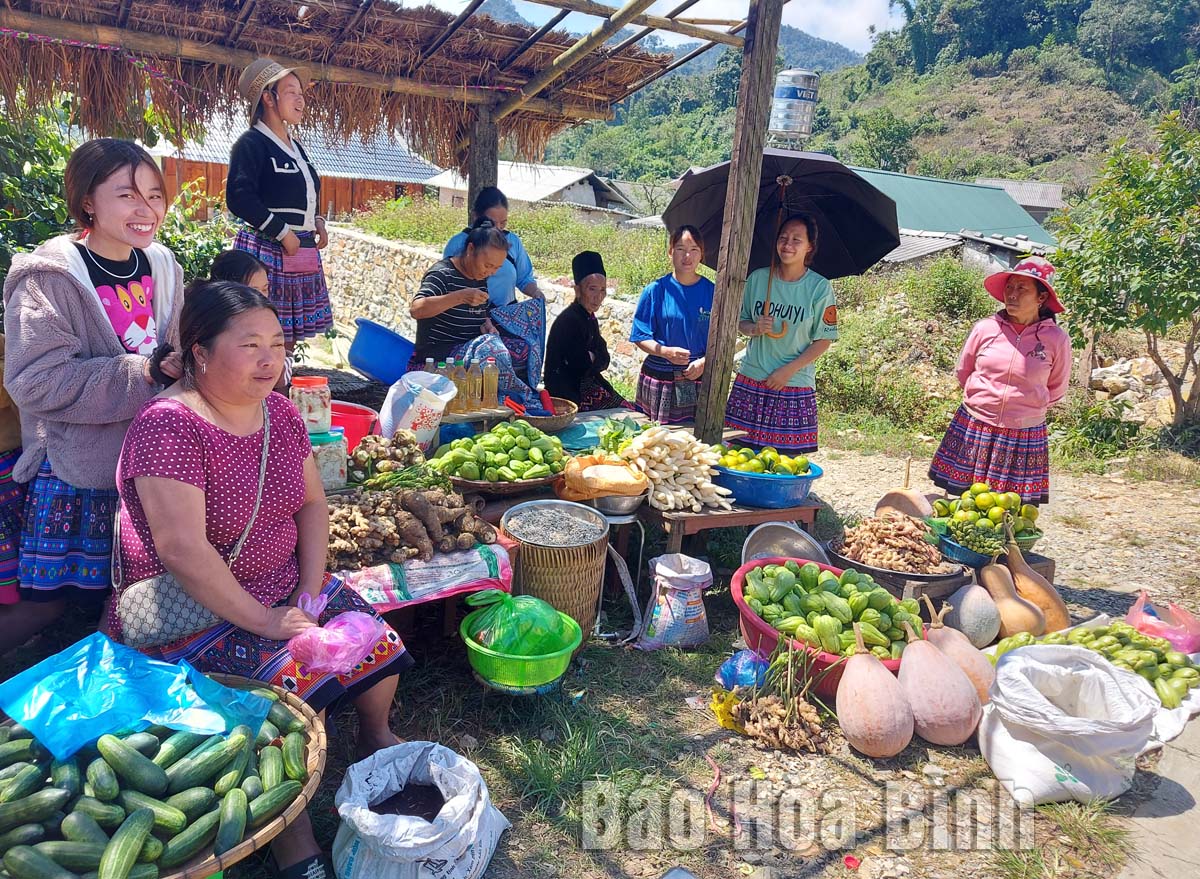
(HBO) – Pa Co commune in Mai Chau district has significantly changed in recent years, with its roads concreted and local residents selling a variety of goods to serve tourism and domestic consumption.

People sell local products to serve tourists in Cha
Day hamlet, Pa Co commune, Mai Chau district.
Pa Co’s Cha Day hamlet now has the appearance of a new-style
rural area. The hamlet has established self-managing groups in residential
areas, built a cultural lifestyle, upgraded the landscape and environment, and
stepped up the development of production, animal husbandry and services
provision. Cha Day has about dozens of households, with women having skills in
weaving, and children allowed to go school.
Pa Co – one of the two communes of Mong ethnic minority
people once known as a hotspot for security issues and drug trafficking – is
gradually changing as a result of attentions and investment from the Party and
State.
Sung A Sia, Chairman of the Pa Co People’s Committee, said
as a difficult area, Pa Co has received attentions of the province and the
district for investment in roads, schools, clinics, electricity grids,
agricultural production and tourism serving its growth.
Located at an altitude of more than 1,000m, Pa Co has a
year-round cool climate, primeval forests, and many popular products such as
Shan Tuyet tea and traditional handicrafts. Such advantages have been tapped
for community-based tourism development. So far, the commune has become an
attractive destination for domestic and international tourists.
The
Hoa Binh Party Committee has directed units to continue implementing Project
No. 09-DA/TU on improving the quality of activities of Party organisations and
administrations at the grassroots levels in association with socio-economic
development in Hang Kia and Pa Co communes. The direction covers a series of
measures to mobilise capital sources for investment in building socio-economic
infrastructure; raise public awareness on the matter; improve the operational
efficiency of the political system; and better the material and spiritual lives
of the people of the two communes.
More than just an information technology teacher, Bui Van Nien is an inspiring figure who has nurtured the scientific curiosity and creative spirit of students in Vietnam’s ethnic minority communities.
Da Bac is the most disadvantaged mountainous district in Hoa Binh province, with ethnic minorities accounting for about 90% of its population. Over the past years, the district has mobilised resources to implement ethnic policies to improve the quality of life of local people.
In recent years, Hoa Binh province has consistently prioritised the protection, care, and education of children, particularly those from ethnic minorities and disadvantaged backgrounds, by creating a safe, healthy, and nurturing environment for their all-round development.
The Steering Committee for Tobacco Harm Prevention and Control of Hoa Binh province, in coordination with the Tobacco Harm Prevention and Control Fund, held a ceremony on May 28 in response to the World No Tobacco Day (May 31) and the National No Tobacco Week (from May 25 to 31). The event was chaired by Nguyen Van Toan, Standing Vice Chairman of the provincial People’s Committee and head of the Steering Committee.
Since 2021, the Center for Industrial Promotion and Industrial Development Consulting (CIIDC) under the Department of Industry and Trade has been implementing a school lighting model as part of the plan for using energy efficiently and economically in Hoa Binh Province in the pẻiod of 2021 - 2025. This model not only aims to improve the learning conditions and enhance the education quality, but it also promotes the message of energy saving, energy security, environmental protection and contributes to the goals of socio-economic development.
In the 2024 - 2025 school year, the entire Hoa Binh provincial education sector includes 520 educational institutions and schools. Among them are 13 ethnic boarding schools with 153 classes and 4,487 students. Four of these schools have met national standards, reaching 30.7 percent.



